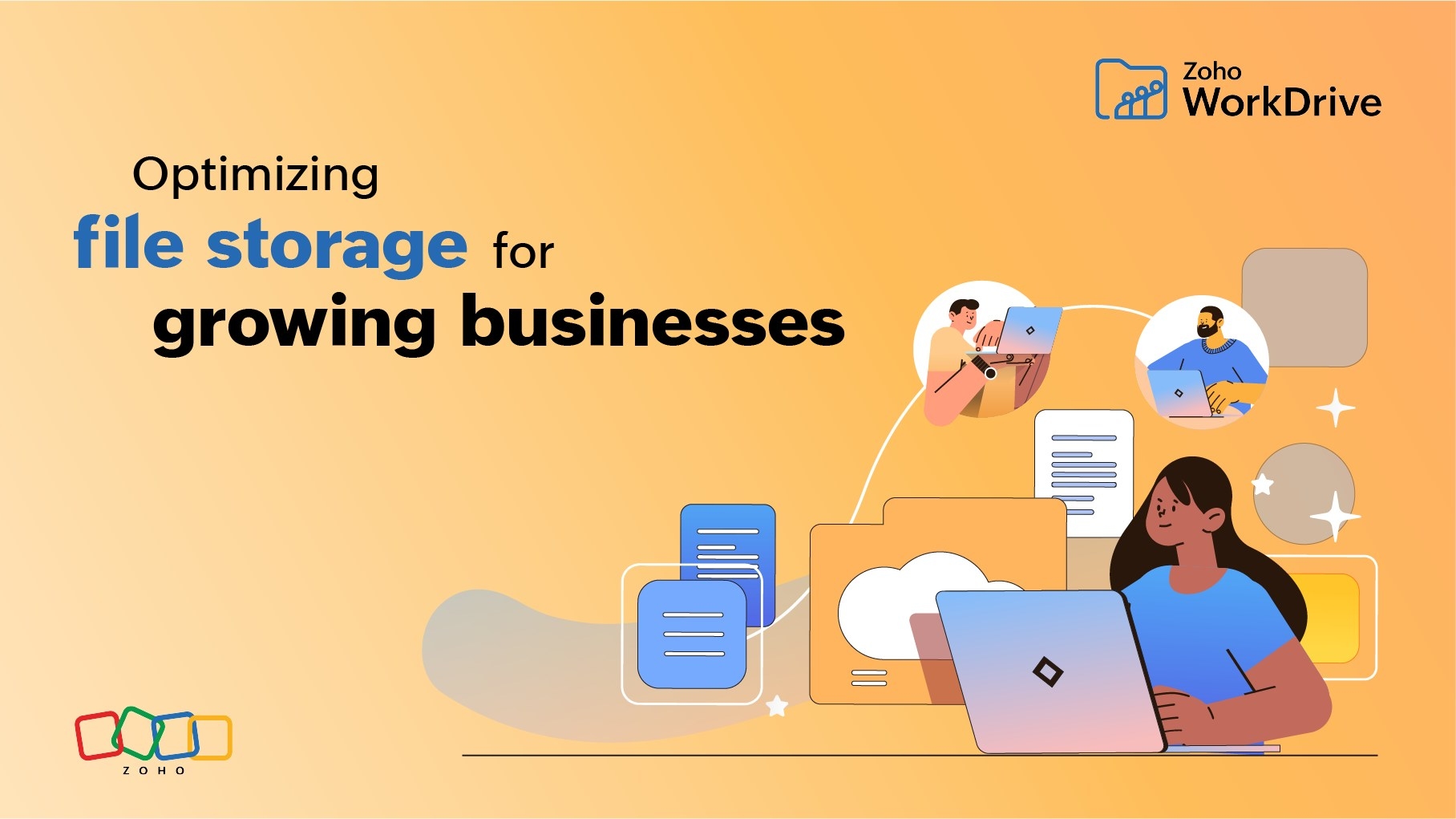- HOME
- Work Culture
- Surging data volume: Challenges and solutions
Surging data volume: Challenges and solutions
- Last Updated : September 12, 2024
- 164 Views
- 6 Min Read

An estimated 402 million terabytes of data is created every day. Growing businesses rely on this data to plan their course of expansion and drive productivity. Apart from creating, collecting, and extracting data, numerous other processes contribute to turning this raw data into comprehensible information. These processes are the keystones to data analysis, and CTOs focus on them to turn their data into successful business results.

In this article, we'll shed light on challenges related to the surging data volume and what you can do to turn the tide to your benefit.
Let's dive in!
The storage conundrum
Businesses see data as an asset that can be processed to give insight for building a productive and focused market strategy. But the drive to capture and analyze ever more information has created a data explosion and a variety of related challenges.
Financial implications
An important aspect of the ever-expanding data is the increased financial burden. Enterprises that maintain extensive repositories are must continually increase their spending for storage devices, data center spaces, and maintenance costs (especially when choosing an on-premises solution).
Security risks
Protection of user data is critical when it comes to personally identifiable information (PII), because not complying with regulations can lead to financial penalties and reputational damage in the event of a data breach. Even accidental file deletion can cause serious issues. As companies store and use larger amounts of data, it will continue to become harder for companies to manage these risks.
Performance hit
Any business needs to make sure teams can work together to achieve common goals. Failing to keep up with technological trends will result in the company's performance taking a hit. This is particularly true for implementing an efficient data storage strategy.
How to overcome the storage challenge?
A solution exists for almost every problem that a growing business with an extensive volume of data can face. The initial phase is evaluating and finding the optimal solution to help the company overcome the challenges. Let's take a look at some of the common solutions to the challenges of data storage.
Embracing the cloud
The most easy and straightforward way to approach the data storage crisis for many businesses is to adopt a cloud storage solution. In fact, the size of worldwide SaaS industry is expected to reach $339 billion in 2024. This points to the convenience and reliability of using a cloud solution.

Cost effectiveness
The foremost advantage of choosing a cloud storage solution over on-premises storage is the financial benefit. Storing data in the cloud is a budget-friendly option when compared with the costs involved in the purchase and maintenance of physical servers. This is because you only need to pay for storage capacity as needed, and you can expand your storage as the company scales up.
Data security
Increasing cyber attacks have made it important for businesses to have viable security measures in action. Cloud storage platforms like WorkDrive offer protection against major cyber threats like ransomware, trackers, and other malicious viruses. They can also help companies maintain compliance with data protection laws in various countries.
Seamless accessibility
A stable internet connection and a device is all it takes for a person to access their files stored in the cloud, irrespective of their location. This helps companies ensure consistent performance in the operations.
Now, we've looked at how a cloud platform can help solve the challenges associated with data storage, but there is still always room for improvement and optimization.
Optimizing the storage
Choosing a cloud platform for storage instantly delivers benefits. Next, it's time to look at opportunities for optimization to improve data processing capabilities and reduce costs. Here are the three major types of storage optimization that any company can make use of.
Data cleanup: Clearing out files that are no longer useful can benefit the storage system and help ensure compliance with statutes like GDPR, which mandates that the storage of PII should be maintained for the least necessary time period.
Data compression: Another valuable tactic for maintaining a clean, efficient storage system is to save space by compressing rarely used files.
Data deduplication: Another helpful step is to identify duplicate files and delete them. Repeating this process from time to time enables organizations to avoid wasting money storing unnecessary files.
Adopting a hybrid solution
Having learned about the on-premises and the cloud way of storing data, there is a third option that offers the best of both worlds. A hybrid option can offer businesses the chance to tailor the most effective storage solution they need by combining on-premises storage systems with cloud-based capabilities. Here are some examples of how a hybrid storage solution can help increase effectiveness.
A company with an unusually large amount of data can segregate it into frequently used and rarely used. The most frequently used data can be stored locally, while more rarely used data can be maintained over the cloud to save storage space.
Another instance is to maintain periodic backups of the on-premises data onto a cloud server. This ensures that the data is safe even in the event of a system being compromised.
Data management
Meeting the basic requirements to ensure that your business data is stored effectively may seem easy, but the real challenge is to find a solution that meets your requirements and supports your broader business goals. Here is how a data management solution will help your business data.
Effortless data retention
Companies can be significantly harmed by accidental file deletions. To overcome this challenge, businesses can add a layer of platform security with data retention policies. This allows files deleted by any user to be retrieved from the trash folder. To add another layer of security, companies can also set up retention time for files deleted from the trash folder and allow admins to decide how long to hold different types of data.
Data classification
Identifying files depending on their level of sensitivity helps in organizing them effectively. Using the features offered by file management platforms like tags or labels can make this easier. This classification can also be used to set the right access levels for different teammates to add another layer of security. Data classification can also be applied for the whole organization, and additional information about the file can be added when a tag is assigned.

Device management and storage settings
An often overlooked aspect of data storage is the number of devices connected with the central storage. More devices can lead to multiple versions of the same document in some cases, which causes extra usage of storage space. The ability for admins to manage user devices can be an advantage here. Modern file storage platforms also come with an option to control the allocation of storage space for personal files.
Considering other options
We've discussed many conventional ways to approach storage, but the list is not done yet. There are other methods that work well, too. Here are some of the roads less taken when it comes to optimizing your data storage.
Storage virtualization
When using multiple storage devices like network-attached storage (NAS) or multiple individual devices, one can use storage virtualization to create a unified view of the available storage space. In simple terms, storage virtualization allows users to view data from multiple data pools in a unified interface. The catch with this technology is the requirement to have a central console to manage the whole process.
Closing thoughts
What we have seen so far are the existing challenges related to business storage. Adding more dimensions to this will open up new topics to discuss. Although there are a myriad of options for companies to choose from, understanding the needs and discussing in detail about your requirements with proactive product teams will help in finding the best workaround for any type of storage issue. Learning about data management platforms to build a solution for your business will not only give a new perspective on how to approach the problem, but also help to choose the best fit for your organization in terms of minimizing the learning curve and maximizing cost effectiveness.










